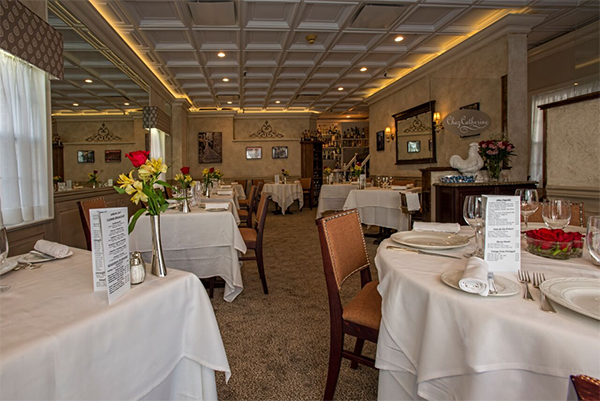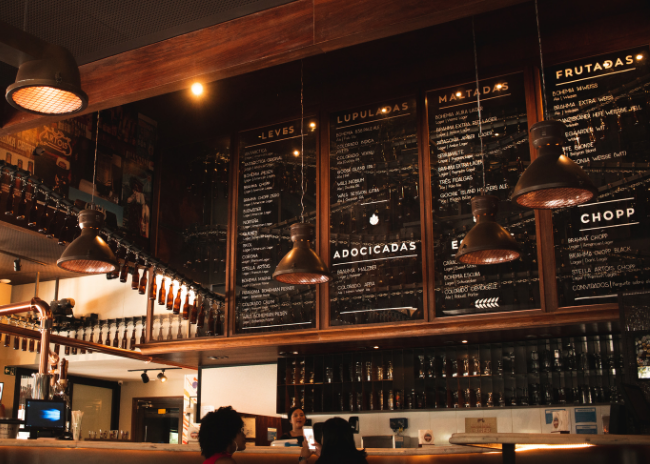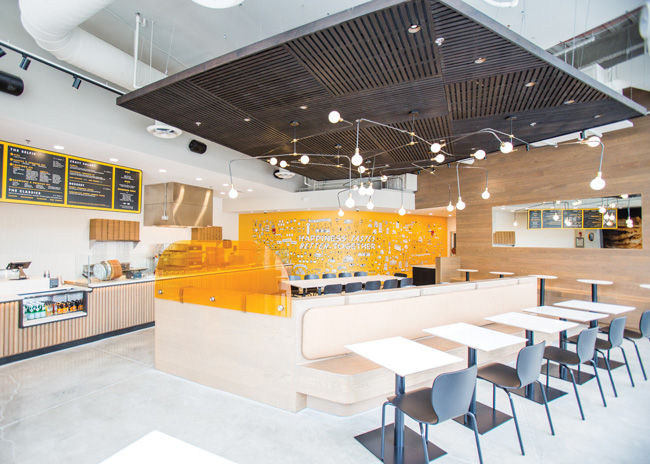 Hannah Collins, Principal Designer and Founder, ROYDeciding how to lay out your restaurant is one of the major decisions you have to make before opening, and it can completely affect the feel of your operation.
Hannah Collins, Principal Designer and Founder, ROYDeciding how to lay out your restaurant is one of the major decisions you have to make before opening, and it can completely affect the feel of your operation.
How do you want the guest to feel and what signals do you want to create to make them feel that way? How casual or fancy do you want to be? How intimate or chaotic, refined or obvious, esoteric or approachable, does the space need to feel? These types of exercises will help you get to the end result you’re really looking for in a space, and each answer triggers a decision within the physical environment of the restaurant.
1. Anchor in the bar and kitchen. These are almost always the anchors of the space because they are the most active areas of the restaurant. Orientation of both and how they relate to one another is critical in nailing the overall layout and design. We usually start by sketching lots of different options and try to stay really outside the box while still considering the parameters we may or may not have, like required dedicated square footage, back bar size, or seat counts. This is the time in the project to be really open minded.
2. Use the layout to communicate your brand and story. Every decision you make as an operator sends a signal to the guest of how you want them to feel. Layout can dictate so much of how the guests interact with one another and the staff. Think of things like booth vs. table and chairs or banquette, opportunities for moments of intimacy or opportunities for high stimulation. How tight or narrow are pathways, how close is the person next to you? How small or large are the tables compared to plate size? Where do the servers convene and how much of what they do can you experience? The flow of staff is critical and should be treated like a stage full of ballet dancers constantly exiting and entering through different curtains throughout the night.
3. Make the front door/reception easy to navigate. Some more modern fast-causal restaurants mount a screen to the wall and have the smallest floating desk right at the front door and that’s precisely what’s most effective for the space. A more high-end restaurant needs something much more formal and may need a lot more space for the host to move around in. Flow in and out the front door is really important to think about. If people are waiting, where, and how comfortable or sometimes intentionally uncomfortable, do you want to make the waiting experience?
4. Make use of technology. When we’re initially mapping out layouts of the space, we draft in 2D first and then throw up a 3D model in grayscale with really simple massing to start to visualize sight lines, height variations and general scale and feel of the different options we’ve created. This really helps the clients make fast decisions because the space starts to take shape in a more tangible way.
5. Think about sight lines. The biggest thing people often don’t pay enough attention to is sight lines and hollowness. What you can and can’t see the moment you walk in the door and at every moment after that is critical to your overall experience. With more and more restaurants going into new construction — concrete boxes — there is also coldness or emptiness that can easily be overlooked in the design phase if you aren’t careful. Orientation of how people interact, scale, and height changes can help avoid the empty box feel of a cold restaurant.
6. Don’t forget natural light. This is a big one because we’re naturally very attracted to the indoor/outdoor feel of windows and natural light. Skylights can help solve this problem, but most restaurants only have one or two sources of natural light. We often put the back of house far from the natural light (and try to incorporate skylights, if possible, in those areas) and bring the bar and dining room as close to where the light sources are as possible.
7. Keep costs down. There are certainly cheaper options in terms of seating style types and considering all areas where you can create general efficiencies will always save you money in the long run. Your plumbing of the bar, bathrooms and kitchen will always be a big expense, so if you can somehow have those relate or share walls, that can save you money.



